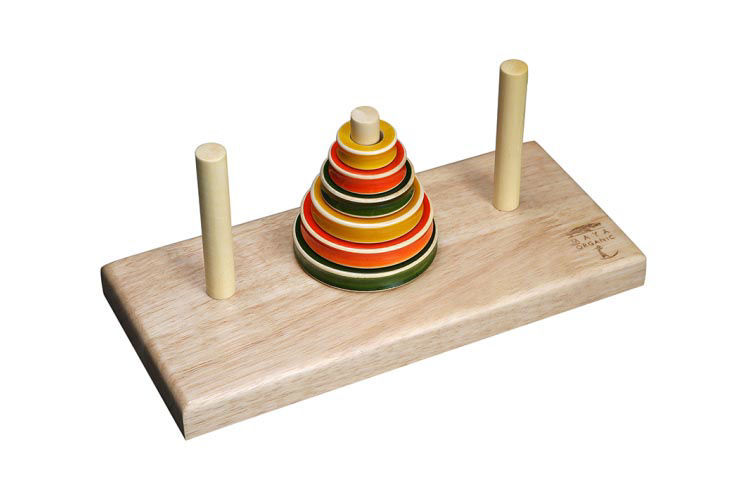

Near the end, I show you the Tower of Hanoi solution and basic patterns, in case you get stuck. While the Tower of Hanoi can be played with any number of discs, the pattern of moves remains the same 1) for an even number of discs and 2) for an odd number. The easiest way for kids to discover the pattern is to first play with only three discs, and then with only four discs. You can read about that pattern here, but I warn you, your eyes may glaze over, as mine did. There is a mathematical pattern that is involved in the solution. A disc can only be placed on an empty space, or on a larger disc.The discs can only be moved one at a time.The objective is to move the stack from point A to point C while observing the following rules: We used a piece of paper divided into three sections for guidance ( I'll call these sections A, B and C.) Stack the discs in order according to size with the smallest disc on top.ĭesignate three separate areas for stacking. It would be fun for the kids to decorate the discs, too. I got an inexpensive package of craft supply wooden circles (affiliate link) and painted them.

You need a stack of 3 or more discs in ascending size. Once my youngest son had completed the 4 disc puzzle, he insisted on using as many discs as he could, and was determined to solve it! How to Solve The Tower of Hanoi: Usually it is my older son who jumps at logic puzzles. I was quite surprised at how much my 6 year old enjoyed playing this game. However, it is simple enough to make your own set and play without the rods. The Tower of Hanoi puzzle is traditionally composed of a stack of wooden discs that fit onto rods, but I didn't want to purchase a set, nor do I have any woodworking tools to build my own. Sounds sort of like some mysterious and legendary monument, doesn't it? The history and background will reveal a bit of why that is! ( see end of post for the background)

After the success of the cubic puzzler and the harder-than-it-looks T puzzle, I have been on the hunt for more classic math games and puzzles. You might have noticed we are on a serious math and logic brain teaser kick around here.


 0 kommentar(er)
0 kommentar(er)
